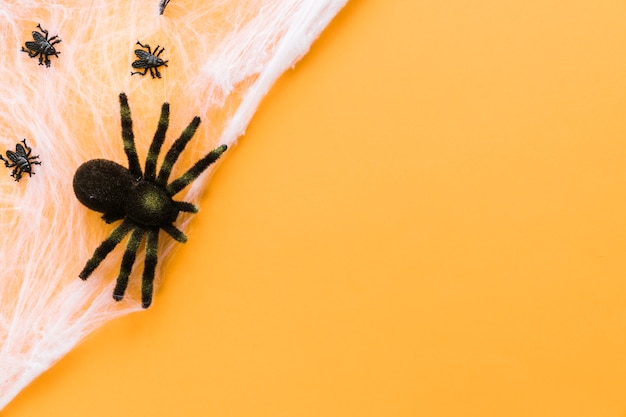Curious Spider Facts – Unveiling the Secrets of these Eight-legged Creatures

Did you know that spiders are not insects, but actually belong to the arachnid family?
Some species of spiders can live for over 25 years, making them one of the longest-living arthropods.
There are around 40,000 known species of spiders worldwide, but scientists believe there may be many more yet to be discovered.
The world’s largest spider by leg span is the Goliath birdeater spider, which can measure up to 12 inches in length.
Spiders have silk glands in their abdomen, which they use to spin webs, create egg sacs, and wrap their prey.
Despite their reputation for being venomous, most spiders are harmless to humans and their bites are usually no more painful than a bee sting.
Not all spiders build webs. Some species are ambush hunters, while others actively chase and pounce on their prey.
Spiders have a unique way of breathing through tiny openings called book lungs, which help them extract oxygen from the air.
While most spiders have eight eyes, some species have fewer, and others have as many as twelve.
Spiders molt or shed their exoskeleton as they grow, allowing them to continue growing throughout their lives.
Spiders play a crucial role in controlling insect populations, as they are natural predators of many pest species.
Some spiders are highly skilled at camouflage and can perfectly blend into their surroundings to hide from predators or prey.
The silk produced by spiders is incredibly strong. In fact, it is five times stronger than steel of the same thickness.
Curious Spider Facts – Unveiling the Secrets of these Eight-legged Creatures part 2
Spiders use different types of silk for different purposes, such as sticky silk for catching prey and dragline silk for building strong anchor lines.
The black widow spider is one of the most famous and venomous spiders in the world, known for its distinctive red hourglass mark on its abdomen.
Not all female spiders eat their mates after mating. This behavior is mostly observed in certain species like the black widow and praying mantis.
Jumping spiders have excellent eyesight and are capable of binocular vision, allowing them to accurately judge distances when pouncing on their prey.
Unlike many other arthropods, spiders have two main body segments: the cephalothorax (head and thorax fused together) and the abdomen.
A species of spider called the ogre-faced spider is known for its incredible ability to create a tiny web net between its front legs, which it uses to catch flying insects.
Some spiders, like the peacock spider, are known for their elaborate and colorful courtship displays, which involve intricate dance routines to attract mates.
The diving bell spider is the only known species of spider that spends its entire life underwater, creating a bell-shaped web to trap air bubbles for breathing.
Spiders are found on every continent except Antarctica, showing their adaptability to a wide range of environments.
The web of a spider is not only used for catching prey but also serves as a communication tool, allowing spiders to send and receive vibrations and chemical signals.
The silk produced by spiders is biodegradable and is being studied for potential applications in medical research and technology, such as sutures and bulletproof vests.
Some spiders, like the Australian triangle spider, have the ability to change their body color to match their surroundings, helping them blend in and avoid detection.
The acidity of a spider’s silk can vary, allowing it to catch specific types of prey, such as flies or ants.
Spiders have been known to cannibalize their own eggs or young if resources are scarce, ensuring their own survival.
Tarantulas, one of the most well-known types of spiders, are native to tropical regions and sometimes kept as pets due to their docile nature.
Some species of spiders exhibit maternal care, with the female fiercely guarding her eggs or carrying her spiderlings on her back.
Orb-weaving spiders, known for their beautifully intricate webs, are able to recycle damaged sections of their web by eating the silk and reusing the proteins to build new strands.
Certain species of spiders, like the trapdoor spider, create burrows in the ground, which they cover with a hinged door made of silk and soil to ambush passing prey.
Spiders molt their exoskeleton by splitting their old skin, often leaving behind delicate spider exoskeleton sculptures that can be fascinating to observe.
Some spiders, like the wolf spider, don’t use webs to catch prey, but rather actively hunt and chase their victims down.
The silk spun by spiders is versatile and can stretch up to four times its original length without breaking, allowing spiders to build sturdy webs and capture prey.
Many people suffer from arachnophobia, the fear of spiders, which can be attributed to their often misunderstood appearances and behaviors.
Some hunting spiders, like the net-casting spider, create a net-shaped web that they hold between their front legs and throw onto unsuspecting prey.
The white tail spider, found in Australia, has been wrongly accused of causing necrotic wounds, as recent studies have shown that bacterial infections may be the actual cause.
Spider silk is highly elastic, which allows it to absorb energy and dissipate the force of impact from a potential threat or prey.
The spitting spider has the fascinating ability to shoot strands of silk mixed with venom to immobilize prey from a distance.
The Brazilian wandering spider, also known as the banana spider, is one of the most venomous spiders in the world and can deliver a powerful neurotoxin capable of causing paralysis.
The majority of spider species have poor eyesight and rely primarily on their sense of touch and vibrations to navigate and detect prey or threats.
Some spider species, like the orb-weaver spiders, will consume and rebuild their webs daily to maintain their effectiveness and avoid attracting predators.
Contrary to popular belief, not all spiders create silk strong enough to suspend human body weight. Only a few spider species, like the Darwin’s bark spider, have been observed to create webs strong enough to support the weight of a human.
The male nursery web spider presents a gift (usually an insect) to the female during courtship as a form of nuptial gift, ensuring successful mating.
Spiders use their venom not only for capturing prey but also for defense, as they may inject venom into potential threats when feeling threatened.

